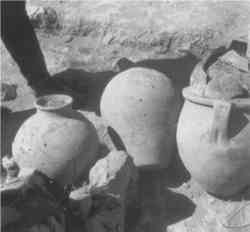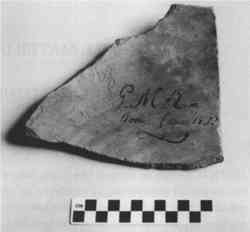OBSOLETE FILL MATERIALS FOUND ON CERAMICSSTEPHEN KOOB
2 HISTORY OF FILLS ON CERAMICS: USE, MISUSE, OBSOLESCENCEThere has always been a need to fill ceramics, as they rarely break without some loss, either of small chips from the break edges or a larger piece that may have “disintegrated” or been simply lost. Early repairs were carried out either to make the ceramic usable again or for its sentimental value, attractive appearance, or religious significance. The idea of filling minor losses, cracks, or blemishes was probably given little thought. Clamps, dowels, and rivets were some of the earliest repairs, as evidenced by their survival on Greek and Roman pottery (Noble 1965; Snow 1986). They continued to be used well into the 20th century, as evidenced by their recommendation for use on American and English china in the 1960s and 1970s (Klein 1962; Larney 1975). Pitch or pine resins were certainly used alone (Charters et al. 1993) or in combination with clamps or ties, particularly if the vessel was meant to be reused (fig. 1).
As ceramics began to be viewed as objects of greater value and appreciation, so did the desire and need to restore them to their original appearance, preferably with no evidence of previous damage. Fill materials, in the sense of fine putties or bulked adhesives, have not been found on ancient repairs. Lime mortars and clay putties were certainly known and used in antiquity, but it is not clear whether they were ever used in ceramics repairs. This type of loss compensation developed only in the 19th century with the increased demand for ancient ceramics. The antiquarian art market fostered a desire for complete, restored vases, and by the mid-19th century major restoration workshops were well established and advertising in Philadelphia, New York (Lanmon 1969), and European cities
Little documentation exists for the recommendation and use of fill materials for ceramics prior to the 20th century, at which point ceramics restoration begins to develop as a serious discipline (Buys and Oakley 1993). Along with this evolution, the increased number of ceramics in museums and private collections created an even greater need for ceramics restoration workshops. Apprentices were trained, and the increased popularity of ceramics restoration in the 1960s resulted in numerous “how-to” manuals—far too many to be listed here—that were full of recipes. These books reflect not only the development of new methods and techniques used in the restoration of ceramics but also the introduction of new synthetic adhesives and fill materials, virtually unknown several decades earlier. Many of the fill materials described in this article have now been completely abandoned and can be termed “obsolete.” They have been replaced by new and improved materials, with increased stability, ease of application, and reversibility. This development has also been accelerated by better communication, education, and training in conservation methods and materials as well as reforms in restoration ethics and aesthetics (see Buys and Oakley 1993 for a further discussion of codes of practice and the Charter of Venice). |


